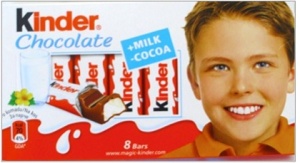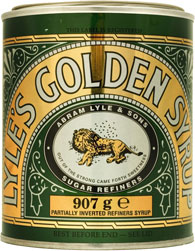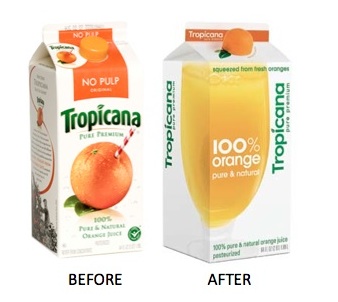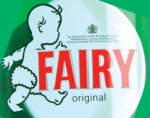Part1
Brand owners often use packaging designers to work on their packaging communication, and when they do, they mostly see the designer as an exterior (and inferior), supplier, called in to answer an already established brief and to execute specific pre-set tasks. But what if things were different, what if the packaging designer was given a more important role in package design development, and was asked to be a part of the total process from the very beginning – what role would the designer play and what advice would the designer give?
As a experienced packaging designer with extensive experience working for national, multi-national and global brands over many years, I’ve been thinking about this question, and as a result, I’ve put together what I think to be some of the most important advice I think brand owners should know:
HOW WELL DO YOU KNOW YOUR BRANDS?
The first thing I would ask is how well do you really know your brands, I don’t mean by that auditing which brands you have and listing product characteristics etc…, What I mean here is, do you really understand your brands? Do you understand the history of each of your brands, do you understand the relationship consumers have with each of them, have you identified and defined what it is about them that consumers are attached to?
The first thing I would ask is how well do you really know your brands, I don’t mean by that auditing which brands you have and listing product characteristics etc…, What I mean here is, do you really understand your brands? Do you understand the history of each of your brands, do you understand the relationship consumers have with each of them, have you identified and defined what it is about them that consumers are attached to?
What are the identifying elements and brand equities…?
Who buys, and who consumes your product?
What is your brand context with competition, with consumers and their lives?
Why do they buy it, what are the real and the perceived benefits?
What are the consummation rituals etc…?
Who buys, and who consumes your product?
What is your brand context with competition, with consumers and their lives?
Why do they buy it, what are the real and the perceived benefits?
What are the consummation rituals etc…?
I would do this because brands rarely belong to manufacturers, as they might think they do. Brands exist because consumers buy them, and it is consumers that make them successful! Marketing may get them out there in front of an audience and can boost sales with promotions and offers, but in the end it’s the relationship between a brand and its customers that cements a brands place in society and in the consumers mind. Mostly, this relationship is built by physical attributes like the product and the packaging, but it can also be built by a long term positioning, and by consistency of message in advertising and promotions.
WHAT ARE YOU DOING TO PROTECT YOUR BRAND EQUITIES?
Having identified what your brand means to consumers, it follows that my next advice would be, to be very careful about giving my marketing people too much power over my brands. The trouble with marketing people is they tend to be young, and of course they want to make their mark on the world. One of the easiest ways to do this is to mess around with the brand, and, as it’s usually quite hard to change the product, young marketers tend to do this by changing the packaging design.
Having identified what your brand means to consumers, it follows that my next advice would be, to be very careful about giving my marketing people too much power over my brands. The trouble with marketing people is they tend to be young, and of course they want to make their mark on the world. One of the easiest ways to do this is to mess around with the brand, and, as it’s usually quite hard to change the product, young marketers tend to do this by changing the packaging design.
But don’t get me wrong; I do believe that having young talented marketing people to work on brands is extremely beneficial, and brands can gain much from their drive, energy and ambition. However, where this can go wrong, is if this ambition and drive remains unchecked! My personal experience has shown me that often this drive to create a difference and to be seen to be doing something, can lead to ill conceived, short term thinking, which can end up being detrimental to the long term brand communication and, worst still, may lead to undermining consumer trust in a brand. One way to avoid this, of course, is to invest in design training allowing your marketing team to gain some understanding of design, equity management and the design process. In this way instead of just making changes for changes sake, there can be an understanding of how to ‘move the brand forward’, through efficient communication and powerful, outstanding design.
There are many examples of brands that retain structures, logos and images that young marketers may have wanted to change over the years, and for all the best reasons, but which remain essential (and untouchable), to the brand’s loyal users.

For example the ‘Kinder Boy’ or the UK’s Fairy baby, who still walks around in towelling nappies, or the dead lion with flies on the Lyle’s Golden Syrup pack, they remain, because consumers want them to!
The key here, is to remember that brands belong to consumers, and

just as, you don’t like people to mess with the things you own without your permission – neither do they!
One sure way of protecting a brand against the excesses of youthful marketing zeal, is to appoint a ‘brand guardian’ within the brand company structure, this might be a design manager or a brand director. Whichever route is followed, this person’s role should be that of an arbiter, a go-between, bridging the gap between marketing and design. But a word of warning, the very nature of this persons position within the brand company, will always mean that they remain slightly biased and strongly influenced by, historical baggage, their own experiences and internal management pressure and decisions. Therefore, I would strongly advise that this person should not ‘be’ the designer but should ‘oversee’ the design process, and ‘steer it’ in the right direction both with internal structures and with external suppliers. Bearing in mind also that designers too can be guilty of un-checked ambition and can just as easily be harmful to a brand’s longevity.
Where an in-house brand guardian is not possible, another way, is to build a long term relationship directly with a design studio (or studios), bringing them in as a part of the brand building team and treating them as partners in your business, this works, but it is still advisable to retain a brand guardian of some sort (for example, senior management), within the brand company, to be sure the long term view of the brand is always maintained.
Clearly however, there are times in the life of a brand where changes are necessary. When this happens there are some golden rules that really must be applied:
WHAT SHOULD YOU DO FIRST?
The first of these rules is to create a good briefing, briefings are there to control the process, to define the required out-come and to be used as a measure by which judge any design work that emerges. However, before a briefing can be written, there is a need to make some kind of audit of the market, the competition and the selling environment. There is also a need to understand consumer’s thoughts and motivations. Both of these tasks are best undertaken by independent outside suppliers, because, there is no doubt, you will always be too close to your brands and products to ever have a really objective viewpoint!You will find that when it comes to writing the briefing, the perspective gained by these external audits will be invaluable.
The first of these rules is to create a good briefing, briefings are there to control the process, to define the required out-come and to be used as a measure by which judge any design work that emerges. However, before a briefing can be written, there is a need to make some kind of audit of the market, the competition and the selling environment. There is also a need to understand consumer’s thoughts and motivations. Both of these tasks are best undertaken by independent outside suppliers, because, there is no doubt, you will always be too close to your brands and products to ever have a really objective viewpoint!You will find that when it comes to writing the briefing, the perspective gained by these external audits will be invaluable.
Developing the package design brief may be one of the most important tasks a brand marketer will ever undertake. Yet compared to the effort put into a brief for an advertising campaign the development of a package design brief is often sadly under rated. Figures show that this assumption is dangerous, for whilst package design development may only be in the region of 50,000 Euro or so, compared to much larger, and therefore seemingly more important, advertising budgets, the importance of the package design cannot be so readily compared in simple monetary terms.
What marketers tend to forget is the moment you re-design your pack, your not just spending 50,000 Euro…your messing with your core product perceptions.You may be altering the purchase cues consumers have come to trust and relate to… you’re playing with goodwill, loyalty and preference…. In-fact, you’re playing with one of the major assets of your company!
This is why a packaging design and a package design briefing are so very important, when set against a brand’s success or failure. It’s not 50,000 Euro at risk, it could be your multi-million Euro business itself. Think of the Tropicana re-design in the USA, which went disastrously wrong and cost PepsiCo millions!
This is why a packaging design and a package design briefing are so very important, when set against a brand’s success or failure. It’s not 50,000 Euro at risk, it could be your multi-million Euro business itself. Think of the Tropicana re-design in the USA, which went disastrously wrong and cost PepsiCo millions!

WHICH DESIGN STUDIO SHOULD I CHOOSE?
Choosing a design studio, can be a difficult task, everyone of them are expert in telling you just how good they are, they all are excellent communicators and spend many hours creating exciting and compelling presentations of their work!But in the end there are some simple ways in which to help make the decision making easier.
Choosing a design studio, can be a difficult task, everyone of them are expert in telling you just how good they are, they all are excellent communicators and spend many hours creating exciting and compelling presentations of their work!But in the end there are some simple ways in which to help make the decision making easier.
Firstly, now that you have your briefing, you should have some idea of the task ahead, and with it some idea of the skills needed. So, use this knowledge to measure-up each candidate, ask questions like, does the studio have experience in your category, or have they handled a similar project before, what did they do, how did they do it etc…?
Secondly, meet them! Most design projects will take a few months to complete, you need to know if there is a good chemistry between you and your new partner, because you are going to be seeing a lot of each other!
Thirdly, be honest! If you are putting them in competition, tell them, and tell them against who they are competing, by doing this you will create a spirit of competition and fuel their ambition. But don’t expect to do this for free! Free work is both immoral, because someone somewhere will have to pay in the end, and demoralising, your project will certainly not get the senior input it deserves!
Finally, if you have a purchasing department, use them to negotiate project costs, not to choose design studio suppliers and certainly not to deliver the brief or receive proposals. Your packaging is far too important to be left to number crunchers. It’s a job for all those clever marketing people you’ve employed!
Secondly, meet them! Most design projects will take a few months to complete, you need to know if there is a good chemistry between you and your new partner, because you are going to be seeing a lot of each other!
Thirdly, be honest! If you are putting them in competition, tell them, and tell them against who they are competing, by doing this you will create a spirit of competition and fuel their ambition. But don’t expect to do this for free! Free work is both immoral, because someone somewhere will have to pay in the end, and demoralising, your project will certainly not get the senior input it deserves!
Finally, if you have a purchasing department, use them to negotiate project costs, not to choose design studio suppliers and certainly not to deliver the brief or receive proposals. Your packaging is far too important to be left to number crunchers. It’s a job for all those clever marketing people you’ve employed!
Many of these ideas may seem obvious at first glance, but my experience shows, that many of them are obviously lacking in so many brand owners organisations. It seems incredible to me that when packaging design is so important within the path to purchase and in maintaining and increasing market share and ultimately driving purchase decisions, that package design and package designers are accorded so little importance within the marketing mix!
Time for a change, I think!
Part2
In this second paper about the role of packaging design in the branding process, I continue to explore what would happen if the packaging designer was given a more important role in package design development, and rather than being treated simply as an outside supplier, and instead, was asked to be a part of the total process from the very beginning.
In first paper, I discussed; how package designers can help brand owners prepare for the design process, though understanding their brands, their consumers and effectively managing the equity elements. I also gave some advice on how to prepare for the design process that follows, by creating and effective brief and choosing the right studio to work with. In this paper I want to move on, to another level of understanding that the packaging designer can bring, and discuss how and why packaging design is such an essential brand communicator.
DO YOU UNDERSTAND THE ESSENTIAL ROLE OF THE PACKAGE?
As a brand designer, who has worked on many major brands throughout Europe and Eastern Europe for the past four decades, I have always been aware about how important it is to understand the selling environment, or the place where my work has had to perform, and as a result, I have spent many hours of my life in supermarkets, observing, recording, and following trends in design, communication and packaging across all categories.
Most true packaging designers, unlike many Brand Managers spend a considerable amount of time in supermarkets, mainly because we believe that truly effective design cannot be created by remaining in an office, or sitting at the computer. The selling environment found in a supermarket is a dynamic and ever changing world, which any Brand Manager ignores at their peril; it’s also an Aladdin’s cave of inspiration, innovation and learning. All those lovely brand books and ‘best of’ website’s, to me are boring in comparison, because they are telling you what ‘has’ happened rather that what ‘is’ happening right now in the market place!
However, I can understand that one of the problems with being a brand owner is that you follow your product from conception to reality, it becomes, ‘your baby’, and like any parent, you are rightly proud of it! So, when you go to see your product on shelf, you, of course, see, ‘your product’ and next to it, you see the‘competition’. The problem is that the effect of this perspective can lead to a tunnel vision, a view restricted only to your brand and your categoryand, as a result, you will tend draw conclusions about what you see, from what we might we might term, the ‘brand owner’s perspective’.
Whereas, shoppers, within the same environment, see ‘choice’, which is OK, except, when you remember, that with 20,000 to 40,000 products in an average supermarket (and many more in larger supermarkets and hypermarkets). The poor shopper has an extremely difficult time trying to make a ‘choice’ and especially the choice you would like them to make, because they are constantly under attack, being bombarded by brands, logos, colours and claims, etc…
This almost certainly explains why around 80% of new ‘product’ launches fail, and of the remaining 20%, only about 5% achieve any real financial success.What is clear therefore, is that if a product is to have any chance of success, it needs to stand out and communicate effectively in the supermarket environment! To do this, it needs the expertise of people who spend their entire working career trying to understand how successful packaging works in the market environment, and who follow the constant changes that occur. One of these professionals is of course, the Packaging Designer!
This is where a package designer’s perspective will add value to the process, because the designer, in the main, will have a ‘broader outlook’, seeing the package, not as just a container of a product that needs to say simply, who made it and what it is, but who goes much deeper, by understanding why consumers re-act as they do, what visual cues stimulate, titillate and communicate the message that has to be put across and what drives consumer purchase decisions!
WHY DO CONSUMERS MAKE THE CHOICES THEY DO?
To understand the how and why consumers behave in the way they do, we need to go back all the way to the very beginnings of life, where I believe it all starts, at the moment we begin to grow inside our mother’s womb and are finally born into this world. As we grow, and our nervous system begins to form, we quickly recognise shapes, textures, odours, colours and sounds… the face and smell of our mother, the bright colours of our first toys, all serve to reassure us that, all is well.
When we do find something we do not like (or at least we are not sure of), we similarly begin to associate the forms, texture, odours, colours and sound with these negative experiences. We lodge all this information in our memory banks, in our sub-conscious and un-conscious minds. It is the beginnings of communication, and it’s so essential, that nature makes sure that we do not need to be taught how to do this, but learn to do it instinctively.
The learning of numbers and letters, of course is also part of the way we communicate, but these come later and have to be taught to us, as we grow older, and in fact, I’m told, are even processed by a different area of our brain.Therefore, it’s not surprising; if we look back to the beginnings of writing, that we find initially, that writing too, evolved by using only images. First, in the time of the cave man as painting on walls, and later as visual symbols and drawings in the time of the Mayans or the Egyptian Pharaohs and other civilisations.
The realisation of this fundamental way in which we assess what we are seeing is of course important to packaging design, as it allows designers, to address shoppers directly, sometimes even without words, so that information is transmitted in seconds. For example, the symbol of a skull and cross bones, which we instantly associate with poison, danger of death, communicates its message far quicker than the words can ever do and in addition, can be understood more or less internationally.
Typefaces can be used to express serious sophistication or friendly fun and many other moods, as they can also be consistently used to link a group of products or units in a brand’s offer.
Colours too are can be effective communicators, for example, the colour green might transmit that a product has some roots with nature, whereas the colour red might indicate that we should pay attention, because of its connotations with fire, love, danger or passion.
When copy is used, I believe it should be simple and relevant to the person it is addressing, that is to say, not cold and factual, but rather, intimate and personal, written in a way that it connects with the reader and expresses the brand USP, it’s character and ultimately the reason to believe.
Packaging designers understand and exploit shape, colour, texture as essential communicators. These communication tools, coupled with great copy, help designers to build brand recognition and product communication, by creating an instant visual and verbal dialog with consumers.
According to Elliot Young of Perception Research Services USA, consumers recall…”Firstly, the colour of your pack, Secondly, the shape of your pack and thirdly, the logo style”. To me it’s no surprise that his research find this to be true, or that it singles out, “the logo style”, as opposed to the logo itself, because I believe, it really is the visual style of the logo that we recognise, often much more that the actual letters.
There is no doubt, that drawing from the understanding that package designers have concerning the power of communicating via forms, texture, typefaces and colours, coupled with great copy… will allow brands to create ways to stand out from all the other packs. Well used, it will also allow brands to create real differentiation. In packaging design, because this is how we communicate.
Source: rhpkg (http://goo.gl/FnZ4C)

Aucun commentaire:
Enregistrer un commentaire